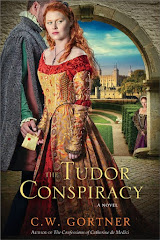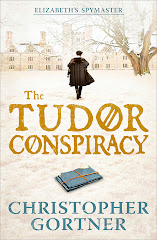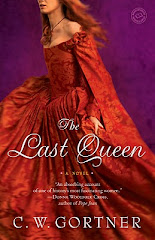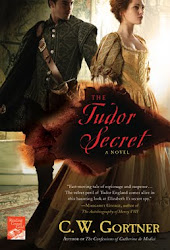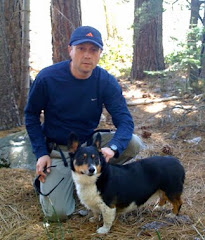I'm delighted to welcome Beverly Swerling, the acclaimed author of numerous, marvelous historical novels, including her trilogy on old Manhattan, City of Dreams, City of Glory and City of Promise, as well as the stand-alone Shadowbrook; a recently released historical ghost story, Bristol House; and her first reissue in e-format, MOLLIE PRIDE. Beverly has been praised for her attention to detail, her deft hand with character and plot, and versatility within the genre. Publisher's Weekly has praised her work as "sweeping. . . readers will be captivated by [her[ intricate plot, colorful characters and convincing descriptions . . . ."
Please join me in welcoming Beverly Swerling
.
 I think it's because of our world today that I decided to encore
MOLLIE PRIDE as a Kindle E-book. We live
in a time of many challenges, and sadly our country sometimes feels painfully
divided. But the real values never
change, though they might go underground for a time. America was also deeply polarized before the
onset of WWII. In fact the majority of
the nation didn't want us to get involved.
Perhaps because they didn't realize how truly evil Nazism was. And the Great Depression was causing terrible
suffering for so many. But when the
challenge ultimately came, ordinary people were compelled to step up and do
heroic things and they did them.
I think it's because of our world today that I decided to encore
MOLLIE PRIDE as a Kindle E-book. We live
in a time of many challenges, and sadly our country sometimes feels painfully
divided. But the real values never
change, though they might go underground for a time. America was also deeply polarized before the
onset of WWII. In fact the majority of
the nation didn't want us to get involved.
Perhaps because they didn't realize how truly evil Nazism was. And the Great Depression was causing terrible
suffering for so many. But when the
challenge ultimately came, ordinary people were compelled to step up and do
heroic things and they did them.
Please join me in welcoming Beverly Swerling
.
Q: Please tell us about
your inspiration for writing MOLLIE PRIDE.
I suppose every historical novelist at some points toys with the
idea of writing something set during that terrible and earth-shaking drama that
was WWII. Certainly I had the idea for
years. For me all fiction is about characters, so the essential thing was to
come up with a lead character who would play some role in that war. That doesn't sound too difficult, but for a
long time I couldn't find a peg--something to hang my story on--that felt at
least somewhat fresh and new.
Then one day I was playing around with opening lines, and
thinking about the almost frantic mood of the roaring twenties. In no time I
had a paragraph I really liked: "A lot of crazy things were happening in America in 1926. While a
breathless nation watched, a couple dressed in jodhpurs and helmets tangoed
from Santa Monica to Los Angeles; a high school student put forty sticks of gum
into his mouth, sang Home Sweet Home, and drank a gallon of milk between
verses; a guy called Shipwreck Kelly spent a large part of his life sitting on
top of flagpoles; and from Harlem’s Cotton Club to Hollywood’s Brown Derby,
everybody danced. For fun, for profit, for kudos – and sometimes just to stay
alive."
Q: What drew you to the particular era that your
book depicts? What are some of the challenges and/or delights about writing
about this time?
Once I'd written that paragraph, next thing I knew I had the
Prides, Harry and Zena, who made a bare-bones living following the marathon
dance contests that were part of the general 20's nuttiness. And I had their adorable six-year-old
daughter, Mollie, who anchored their act with her rendition of the Charleston.
If you follow that timeline for a few years you're into the
golden age of early commercial radio.
Why not make Mollie a child star on radio! And from there… Well, what about the role of radio in WWII? It was huge.
This was the first time war was happening in people's living rooms. And there was the other side, the spies
dropped behind enemy lines who took their lives in their hands to broadcast coded
messages.
Bingo, I had my WWII book.
Q: What process did you
use to transport yourself (and readers) to another time period? How do you go
about research and incorporating it into fiction?
In the matter of WWII, the issue is finding the thread you want to
follow when so much is happening. I had
settled on radio and that helped to keep me focused, but like all my books,
it's always about more than what it's about.
People don't stop loving and laughing or hating and plotting just
because there's a war on.
Q: Does your historical fiction convey a message
or theme relevant to our world today? If so, what do you think it is? If not,
how do you think readers can find common ground with the characters in your
story?
 I think it's because of our world today that I decided to encore
MOLLIE PRIDE as a Kindle E-book. We live
in a time of many challenges, and sadly our country sometimes feels painfully
divided. But the real values never
change, though they might go underground for a time. America was also deeply polarized before the
onset of WWII. In fact the majority of
the nation didn't want us to get involved.
Perhaps because they didn't realize how truly evil Nazism was. And the Great Depression was causing terrible
suffering for so many. But when the
challenge ultimately came, ordinary people were compelled to step up and do
heroic things and they did them.
I think it's because of our world today that I decided to encore
MOLLIE PRIDE as a Kindle E-book. We live
in a time of many challenges, and sadly our country sometimes feels painfully
divided. But the real values never
change, though they might go underground for a time. America was also deeply polarized before the
onset of WWII. In fact the majority of
the nation didn't want us to get involved.
Perhaps because they didn't realize how truly evil Nazism was. And the Great Depression was causing terrible
suffering for so many. But when the
challenge ultimately came, ordinary people were compelled to step up and do
heroic things and they did them.
Love, honor, duty… those aren't just words for Mollie and the
people she loves. And the stakes were
incredibly high. So in the end I didn't
open the story with that paragraph I quoted about the crazy things happening in
1926. I opened it with a prologue that
takes place in Washington DC, in1946, and the threat of the death penalty for high
treason…
As for making the characters in historical fiction meaningful for
today's readers, I think that requires the writer to be absolutely honest. Sitting down at the computer, as has been
said before, and opening a vein. You've
got to let real life happen on the page, and show what really motivates the
people in your fiction, their fears and their desires and their longings…
Emotions of that sort don't change much from decade to decade, or even century
to century. That kind of truthful
writing is what I've tried to achieve with Mollie and the people around her. When the book was first published in 1991
many readers felt that emotional connection to Mollie. I'm hoping that will happen for those who
meet her now.
Q: Can you tell us about your next project?
I'm working on something
called 37 SIN EATERS' STREET. It's a Back-and-Forth-in-Time book that takes
place in Prague in the 1940's, and New York City today. In that sense it's not unlike my recently
published, BRISTOL HOUSE. And I've used
that kind of dual period template in two earlier books: WOMEN'S RITES and A
MATTER OF TIME. They are both scheduled to make their E-Pub Encore appearances
later this year.
Thank you so much, Beverly. To find out more about Beverly Swerling and her work, please visit her website.













